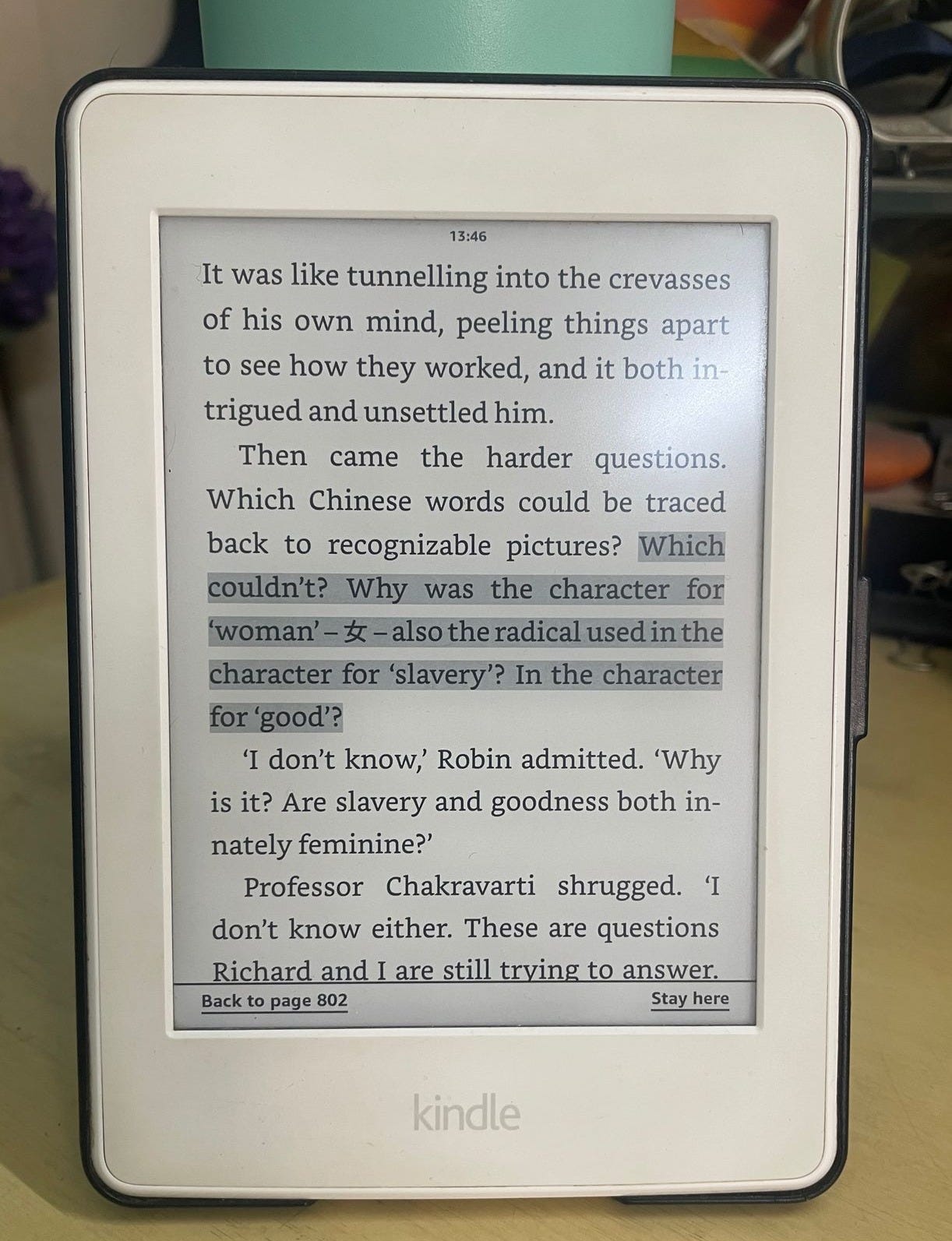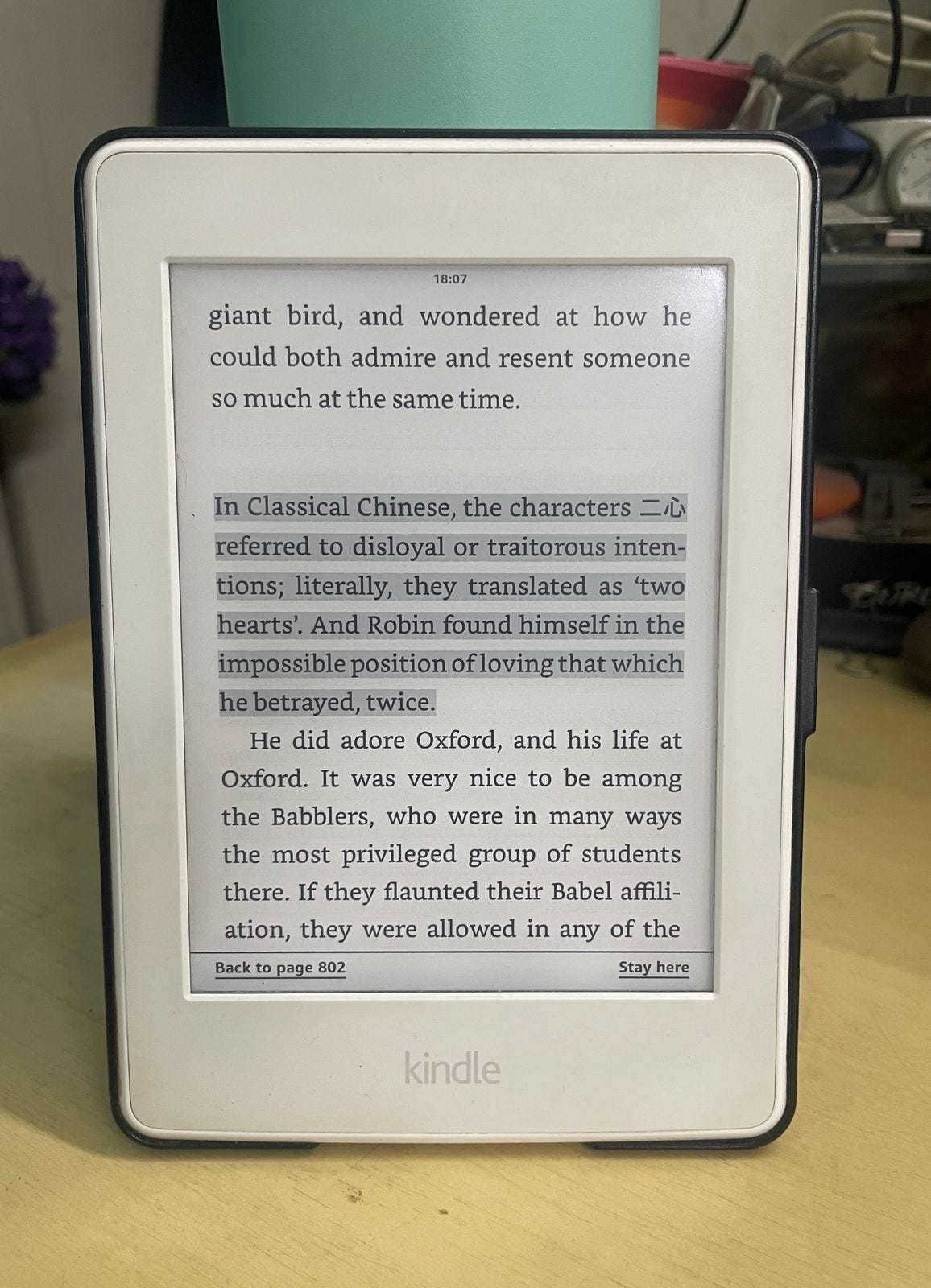This week in Mandarin class, we delved into practising conversations set in various scenarios, one of which took us to the bank (银行, Yínháng) for currency exchange (兑换货币, Duìhuàn huòbì). Before we began, our teacher asked me to open up Pleco to look up some new vocabulary for the session. Naturally, I started by searching for the Mandarin words for different currencies:
Dollars (美元, Měiyuán)
Pounds (英镑, Yīngbàng)
Won (韩元, Hányuán)
Yen (日元, Rìyuán)
Rupee (卢比, Lúbǐ)
As I went through these, I realised something curious: while the Chinese currency is simply Yuán (元), the names for foreign currencies often had distinct patterns. The word for dollars, Měiyuán, blends the name of the country with "yuán." The same applies to the Won and Yen. But then there are currencies like the pound, rupee, and others that don’t follow this structure, and I couldn't help but wonder why.
So, I asked my teacher. She gave a succinct answer that left me thinking: Countries with long-standing political or trade ties to China adopted names that incorporate “yuán.” However, for countries that developed relations with China later on, the names evolved differently, often bearing little resemblance to the Mandarin word for currency.
It was a small revelation, but it struck me deeply, language is not just a reflection of culture; it’s a living testament to geopolitics and trade history. It reminded me of my recent reflections while reading Babel, where I’d highlighted the fascinating ways language carries the weight of history and power dynamics.
The character for “ woman” is also the radical used in the character for slave:
The character for "woman," 女 (nǚ), is also the radical used in the character for "slave," 奴 (nú). That might sound surprising, but let’s unpack it step by step.
First, what exactly is a radical? Think of it as the "building block" of a Chinese character, much like a Lego piece. It gives a clue about the meaning or category of the character. For example, take the radical 氵 (shuǐ, water). It shows up in words connected to water or liquids, like:
河 (hé, river)
海 (hǎi, sea)
酒 (jiǔ, alcohol)
If you spot that little splash of water (氵) in a character, it’s like a hint saying, "This has something to do with water!" Radicals are like a detective’s toolkit for figuring out the story behind a word.
Now back to 女. This radical for "woman" is found in characters like 奴 (nú, slave). The combination of 女 and the phonetic component 又 (yòu) reflects cultural and historical contexts where women were often associated with servitude or subordination.
This connection feels unsettling today, as it points to a patriarchal system where women were marginalised. But it also tells us something about the society that shaped the language. By looking at characters like 奴, we get a window into the values and power dynamics of early Chinese culture.
The 女 radical appears in many other characters, some with negative connotations, like:
妾 (qiè, concubine)
嫉妒 (jídù, jealousy)
婪 (lán, greed)
婬 (yín, illicit)
奸 (jiān, treachery/illicit sexual relations)
These characters reveal how women were often viewed through a lens of morality, control, and subordination.
Yet, the 女 radical also shows up in positive contexts, celebrating traits traditionally associated with women, like:
安 (ān, peace)
妙 (miào, wonderful)
婉 (wǎn, graceful)
娴 (xián, refined/skilled)
These words reflect ideals of beauty, grace, and harmony, often linked to Confucian expectations of femininity.
Language carries the weight of history, and the 女 radical serves as a reminder of how cultural attitudes shape words and how they evolve. While these characters reflect a patriarchal past, they also remind us of how far we’ve come in rethinking gender roles and equality. Language isn’t just a tool for communication; it’s a lens through which we can view history and progress.
The subtle poetry of two hearts in Mandarin:
The Chinese language has an extraordinary ability to be both poetic and sharply revealing at the same time. Take the phrase 二心 (èr xīn), for example. On the surface, it means "two hearts," which, in a romantic context, could easily be interpreted as something heartwarming, perhaps describing soulmates or deep affection. But no, Chinese semantics takes a sudden, surprising turn: "two hearts" doesn’t speak to love at all.
In Babel, Robin, the protagonist, finds himself in the midst of a moral quagmire, caught between two conflicting loyalties. Without giving too much away, he’s faced with a choice between betraying the comfortable life he’s built—a life full of luxuries and security and following a higher moral calling, one that demands painful sacrifices.
And here’s where Robin’s linguistic expertise shines through. As a class-A linguist, he doesn’t shy away from sprinkling in some interesting trivia. He shares with us the phrase 二心, literally "two hearts," which carries an entirely different meaning from what one might assume. Rather than symbolising love or affection, 二心 is a term that refers to disloyalty or betrayal.
But the real depth of this phrase lies in the subtlety of its construction. In Chinese, the character for "heart" (心, xīn) often goes beyond just representing emotion; it’s tied to intention, willpower, and moral grounding. So when someone has "two hearts," it isn’t just about indecision, it’s about a divided spirit, torn between conflicting truths or desires. It’s a poetic, almost surgical way of illustrating the inner duplicity that comes with being pulled in two different directions.
Robin doesn’t just tell us this to flex his linguistic prowess. It’s a reflection of his inner struggle, a neat little way of showing how language can capture the messiness of human emotion. And honestly, who among us hasn’t felt a bit èr xīn at some point—like when you’re torn between sticking to your principles and, I don’t know, binge-watching one more episode?
How Buddhism Wove Sanskrit into Mandarin:
In the fifth standard, we had the option to choose between Sanskrit and Marathi as a second language. Both felt dense, intricate, and intimidating. Given that my father speaks impeccable Marathi, I naively assumed that some of his fluency might have trickled down to me. Alas, genes don’t transfer linguistic prowess, and I remain hopelessly bad at Marathi. Looking back, I often wonder: would I have been better off struggling with Sanskrit instead?
This question takes on new significance when I think about Robin, the protagonist in Babel. A Chinese scholar, Robin, learns Sanskrit from an Indian-origin professor. The reason? Many Chinese words have their roots in Buddhism, which itself is deeply tied to Sanskrit. For instance, the Chinese word 涅槃 (nièpán), meaning "nirvana," traces its origins to Sanskrit, seamlessly blending linguistic and philosophical traditions.
This cultural and linguistic exchange isn’t a coincidence. Wilhelm von Humboldt, the Prussian philosopher and linguist, famously observed in his 1836 study, On Language: On the Diversity of Human Language Construction and its Influence on the Mental Development of the Human Species, that “Chinese and Sanskrit are considered to be the two poles that go into two extremes” in terms of grammatical structures and sound systems. Yet, despite their differences, the two languages found common ground through Buddhism, a connection that has left an indelible mark on Chinese culture.
This interplay between languages was made possible through a monumental effort: the Buddhist sutra translation project in China. This initiative, spanning millennia, had a profound impact on Chinese religion, philosophy, and society. It began during the late Han Dynasty, when Indian and Central Asian Buddhist monks collaborated with their Chinese counterparts to translate Sanskrit scriptures into Chinese. These efforts didn’t just involve linguistic expertise—they required an intimate understanding of both Buddhist doctrines and cultural nuances.
The translation activity was categorised into four distinct waves:
The Buddhist Sutra Translations: Beginning in the late Han Dynasty, this first wave was carried out by monks who bridged the gap between Sanskrit and Chinese, leaving a lasting impact on Chinese thought.
Jesuit Influence: In the late Ming Dynasty of the 16th century, Jesuit missionaries introduced Western knowledge, including science and Catholic theology, to China.
Post-Treaty Translations: Following the Treaty of Nanking in 1842, translation efforts shifted toward social sciences, military strategies, and Western literature.
Modern Scientific and Cultural Translations: Starting in the late 1950s, this wave focused on modernising China, though it was temporarily interrupted by the Cultural Revolution.
One of the most notable figures in this linguistic bridge-building was the Buddhist monk Xuanzang (Hsuan-tsang), who emphasised that some terms should remain untranslated. He identified five categories for these “untranslatable” terms, such as esoteric concepts (e.g., mandala), culturally unique items (e.g., Jambudvipa tree), and terms laden with symbolic meaning (e.g., Prajnaparamita). This approach preserved the richness and depth of the original Sanskrit terms while introducing them into Chinese culture.
This rich linguistic and cultural exchange between Sanskrit and Chinese is a testament to the enduring ties between India and China. These two ancient civilisations, despite their vast differences in language, geography, and philosophy, have shared a profound relationship that transcends time. From the sutra translations of the Han Dynasty to the shared principles of Buddhism, the interactions have left an indelible mark on both cultures.
Even today, despite the complexities of modern geopolitics, these historical connections manifest in subtle, everyday ways. Words like 涅槃 (nièpán, nirvana) and the Buddhist philosophies they represent are embedded in the Chinese lexicon, a quiet reminder of the spiritual and intellectual bridges built centuries ago. The food we eat, the art we admire, and even the philosophical ideas that shape our societies are echoes of this shared history.
This perspective challenges us to look beyond contemporary divisions and recognise the deep, often unnoticed, threads that tie us together. It’s a reminder that while the present may be marked by boundaries and differences, the past tells a story of collaboration, shared knowledge, and mutual enrichment, a story that continues to shape us in ways we might not even realise.
While reading this book, I took my time savouring every page. Although it modestly describes itself as an "arcane history," it undersells its brilliance. Beyond weaving beautiful stories with rich characters and morally complex narratives, this book offered me something unexpected—a deeper understanding of the language I’m currently learning.
I often scour for short stories written in texts I can partially decipher, or tales of mythology and the history of the Chinese language, but I never thought a fantasy novel would provide such a wealth of linguistic and cultural insights. Just the other day, I was engrossed in a discussion with a friend about generic tropes in fantasy, and I reached a vehement conclusion: no matter how fantastical the world, every creation stems from a shard of reality.
This book is no exception. Through its narrative, I found myself learning about the biases, history, and cultural intermingling embedded in a language. What began as a casual read for my book club turned into an exploration of the subtle ways fiction can illuminate real-world complexities, which I am still exploring.
There is lots more, stay tuned for part 2!







